Bern
Bern or Berne (German: Bern [bɛrn] (listen), Alemannic German: Bärn [b̥æːrn], French: Berne [bɛʁn], Italian: Berna [ˈbɛrna], Romansh: Berna [ˈbɛrnɐ] (listen)) is the de facto capital of Switzerland, referred to by the Swiss as their (e.g. in German) Bundesstadt, or “federal city“.[3][note 1] With a population of 142,656 (March 2018), Bern is the fifth-most populous city[citation needed] in Switzerland.[4] The Bern agglomeration, which includes 36 municipalities, had a population of 406,900 in 2014.[5] The metropolitan area had a population of 660,000 in 2000.[6] Bern is also the capital of the canton of Bern, the second-most populous of Switzerland’s cantons.
The official language in Bern is (the Swiss variety of Standard) German, but the most-spoken language is an AlemannicSwiss German dialect, Bernese German.
In 1983, the historic old town (in German: Altstadt) in the centre of Bern became a UNESCO World Heritage Site.[7
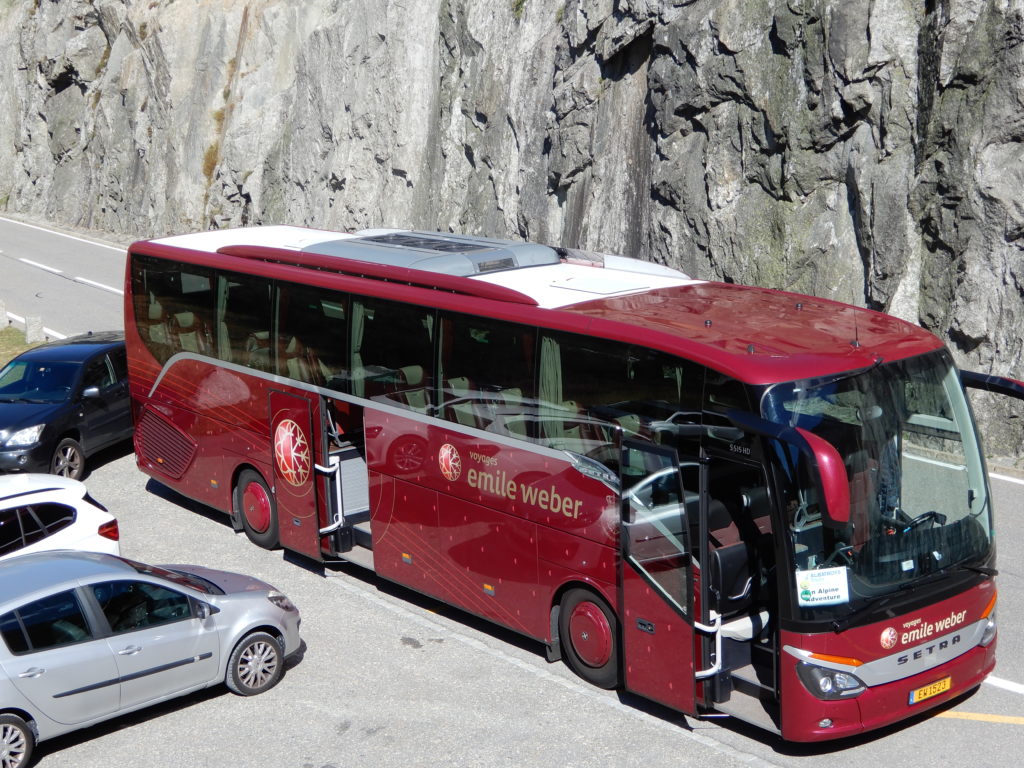
The Bus We Went On:
Overall we spent two weeks going through Switzerland and one week in upper Italy at Lake Garda. We went from Zurich in Switzerland to Milan in upper Italy over 17 days. We went from the 1st September to the 17th September 2018.
Our tour of 26 people was driven by a wonderful bus driver Michel for three weeks and led by a wonderful tour manager Reinhard. He was Austrian by culture and knew the areas so well …. overall and in the detail. He was excellent with people and even observed that I was three quarters of the way through a book I was reading.
It was wonderful as our tour of 26 people really cared for each other on an individual basis. We all travelled on this big bus with padded leather seats ….. see a photograph of the bus above.
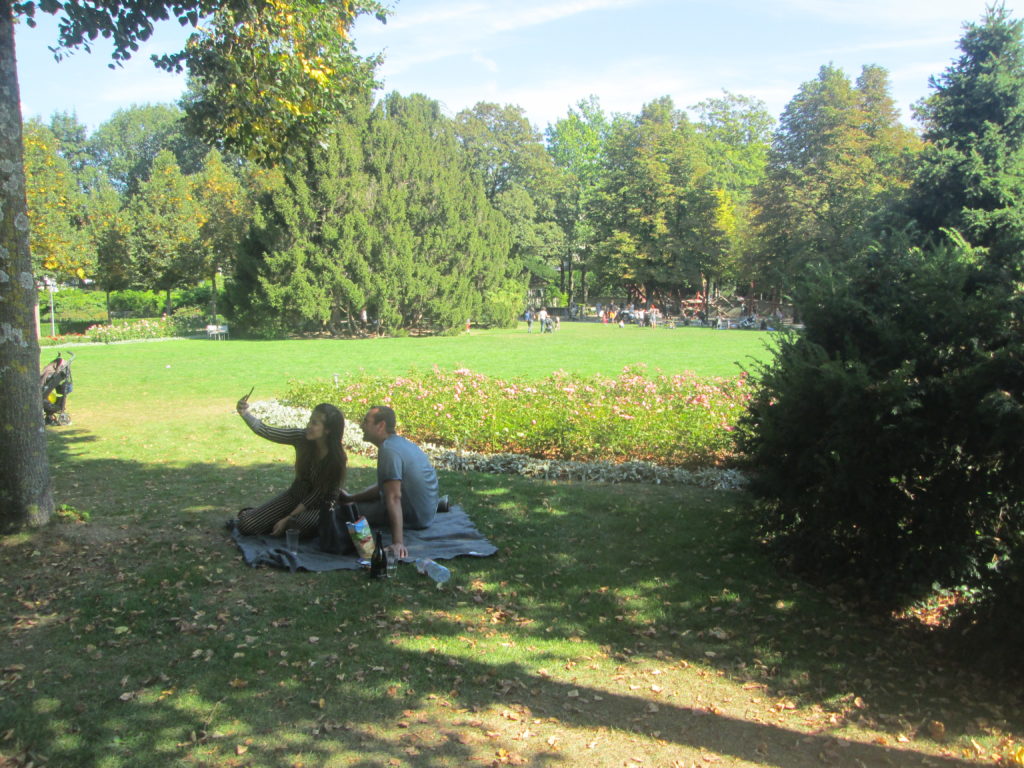
….. A park we went straight through to look over Bern after we got off the bus ……
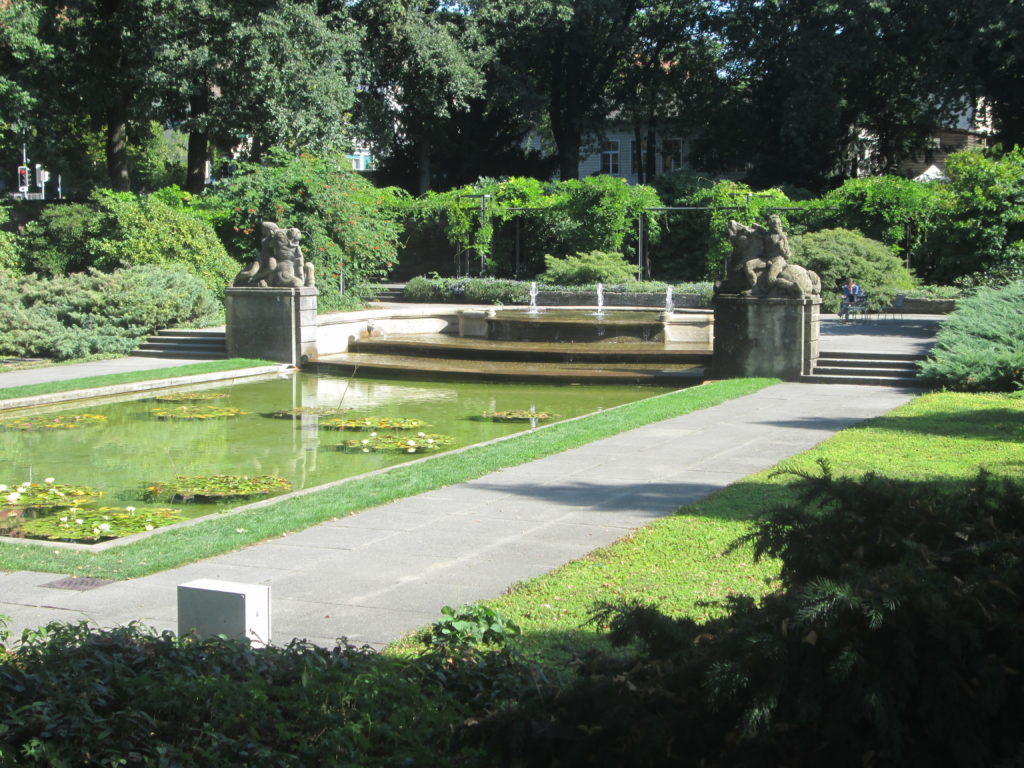
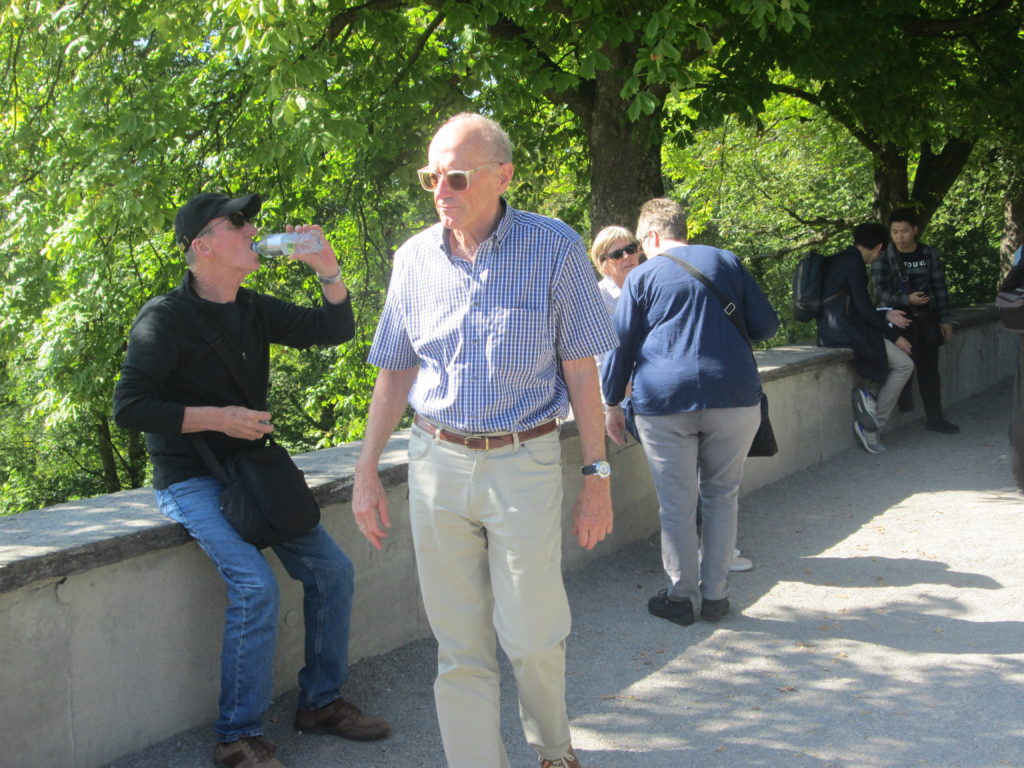
In the park overlooking old Bern: Our group of 26 people were led by the wonderful man Reinhard in the blue shirt. He was Austrian by culture and knew the areas so well …. overall and in the detail. He was excellent with people and even observed that I was three quarters of the way through a book I was reading. Our tour group of 26 people was also driven by a wonderful bus driver Michel for three weeks.
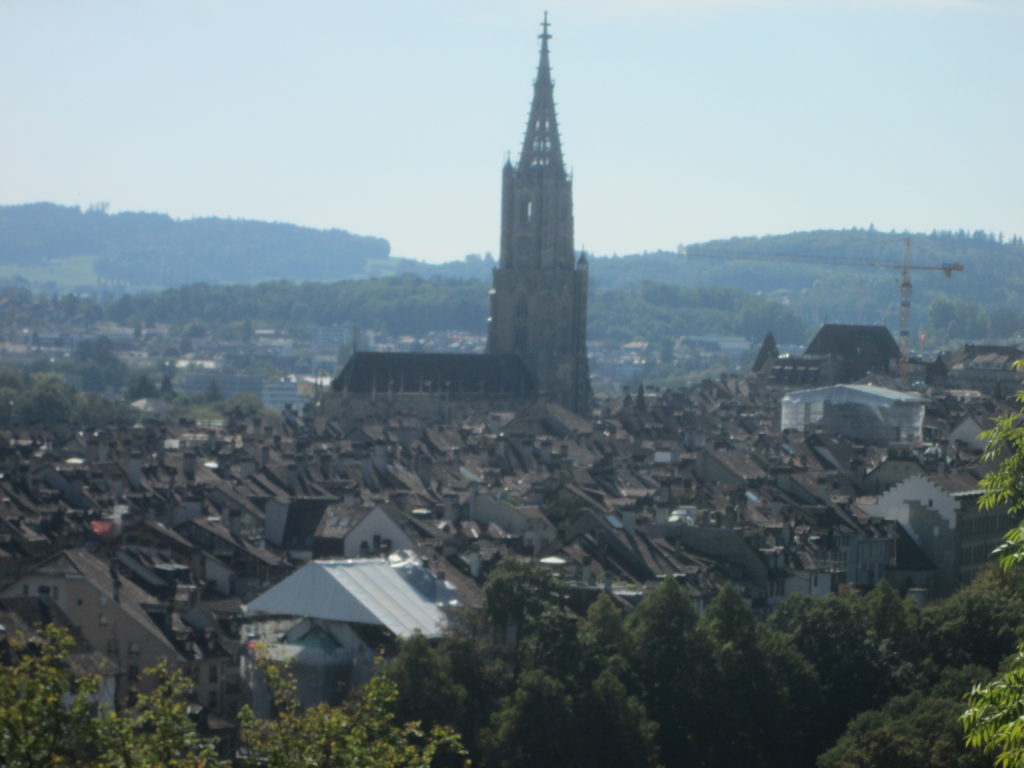
- Looking out from the park on old Bern:
Rising over the old town, The Cathedral of Bern stands as the tallest cathedral in Switzerland. The structure’s crowning feature is its 100.6 m (330 ft) tower, which affords views of the Alps on a clear day from the top. To get there, you’ll need to climb about 350 steep stone steps, which take you past the original church bells. Built in 1421, today the Gothic cathedral is a Cultural Property of National Significance. Pay the small entrance fee to visit the tower, or enjoy a free cathedral tour of the main area. It couldn’t be easier to arrange your visit to The Cathedral of Bern and many more Bern attractions: make an itinerary online using Inspirock’s Bern trip planner.
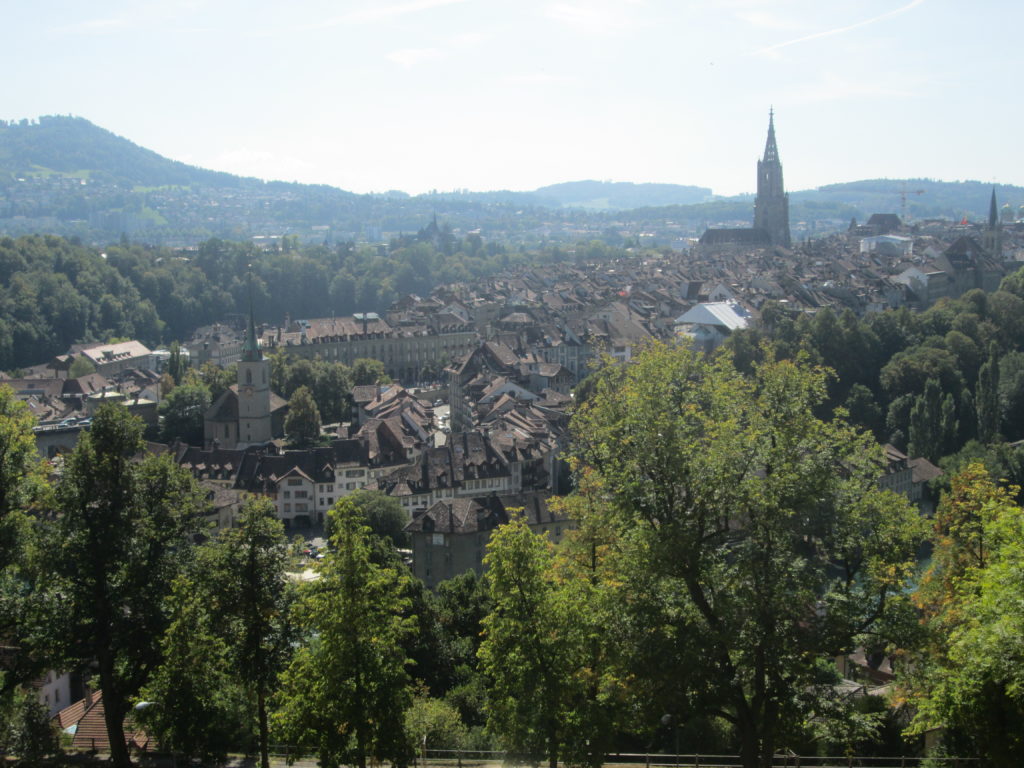
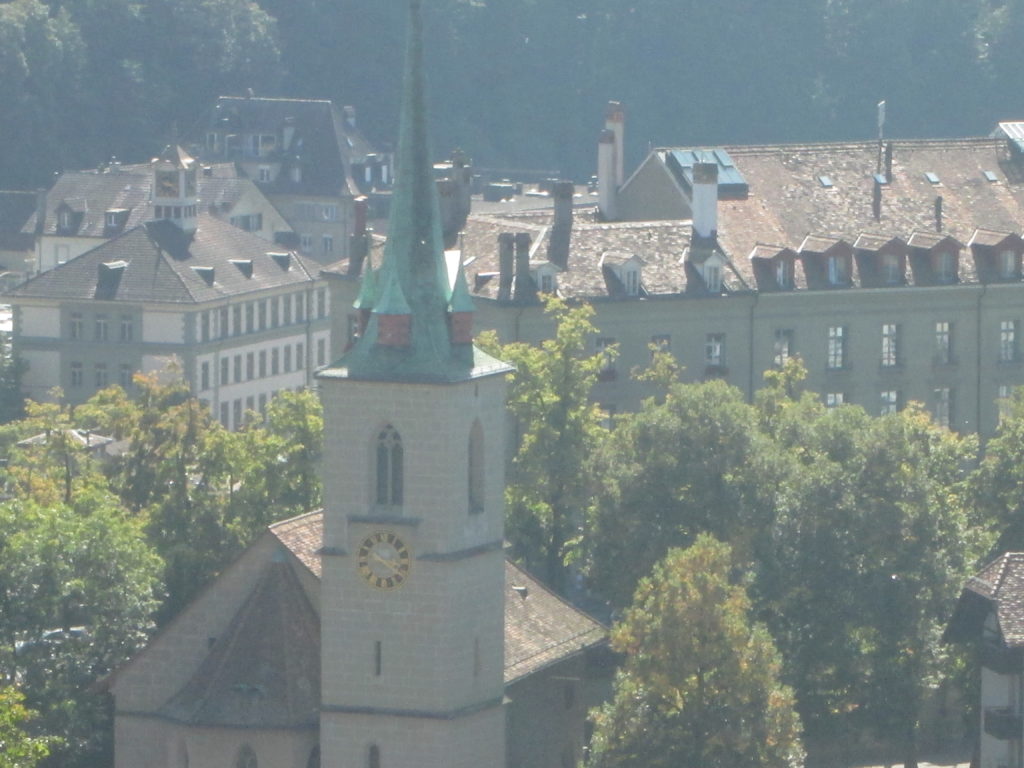
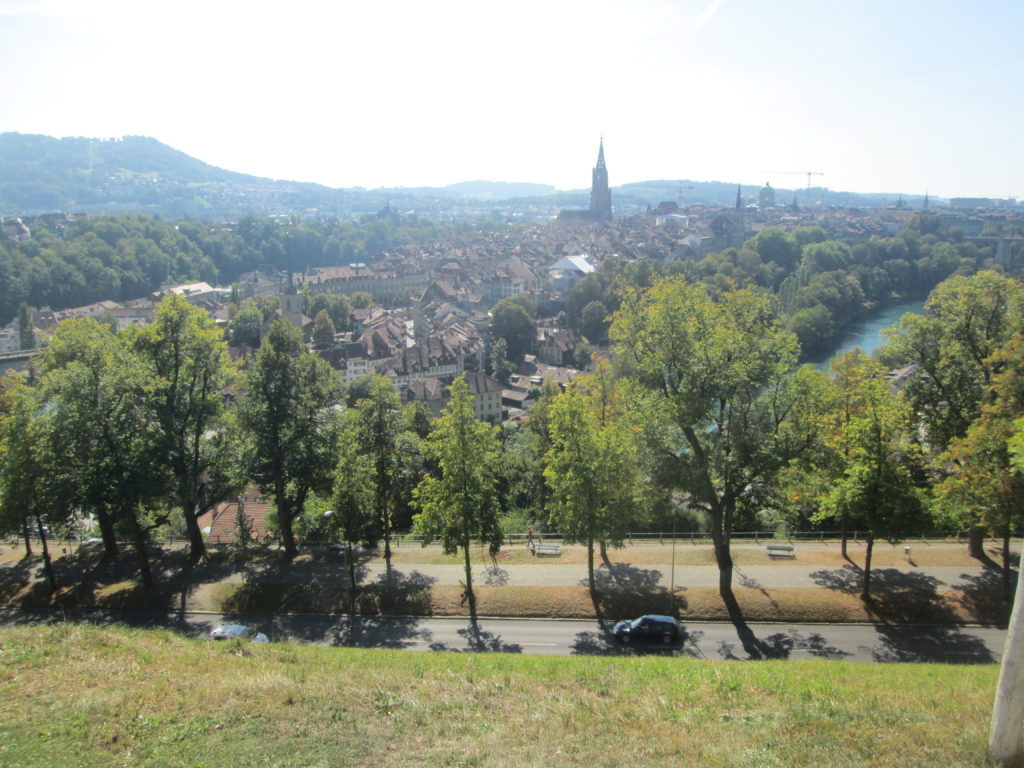
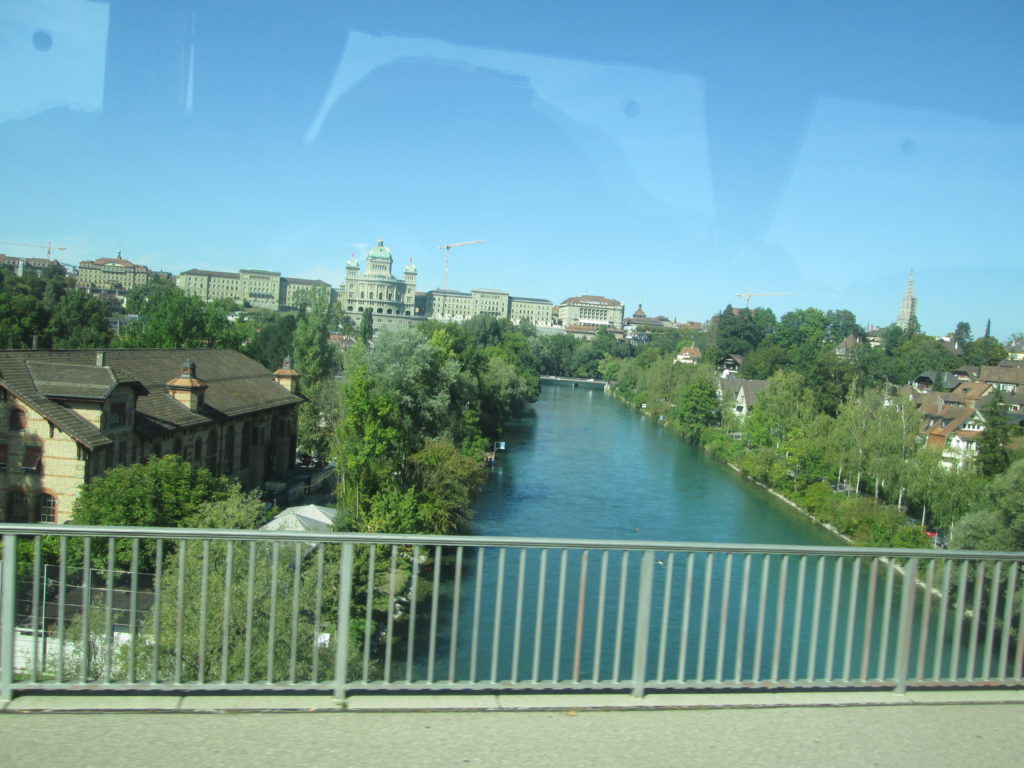
We went over this bridge which crossed the River Aare. See these awesome websites:
Swimming in the Aare River in Bern, Switzerland – YouTube
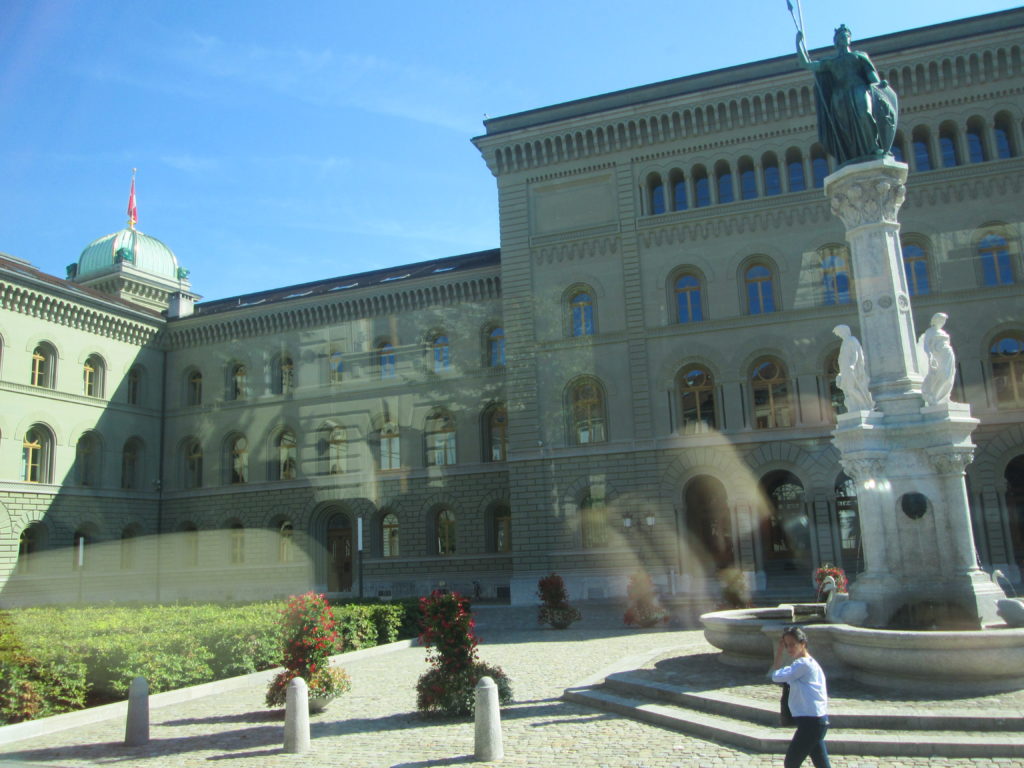
Adrian von Bubenberg, statue in the main street. See what Wikipedia says: https://en.wikipedia.org/wiki/Adrian_von_Bubenberg.
Adrian von Bubenberg (born c. 1434 in Bern; died August 1479 in Bern) was a Bernese knight, military commander and mayor (Schultheiss) of Bern in 1468-1469, 1473-1474 and 1477-1479. In Switzerland, he is remembered as the hero of the Battle of Murten
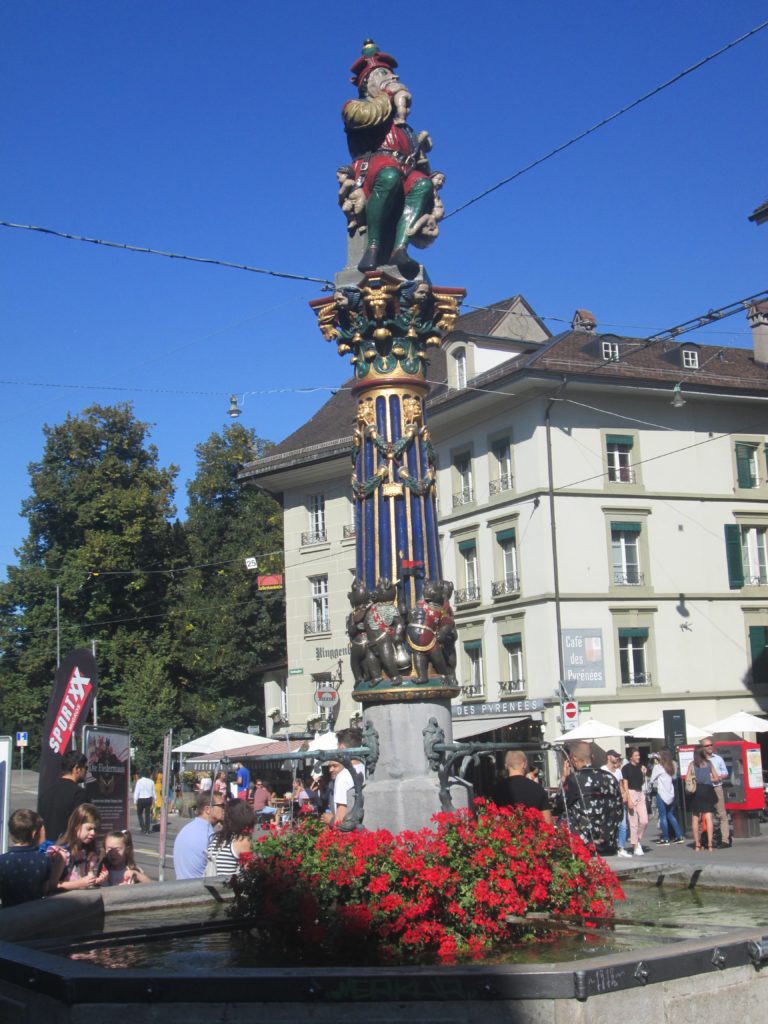
The Child-Eating Ogre of Bern:
….. The ogre is at the Kindlifresserbrunnen fountain in the main street of Bern. The ogre has a rotund, powerful belly; the ogre was adorned with a green and red smock (the type Santa Claus would maybe wear in the off-season when the demons possess him), and the ogre had the head of a toddler in his mouth. The ogre was consuming it alive, and within its other hand and filling his pockets were more babies, all crying and terrified, presumably there for the feast as well. An odd picture. An odd statue. Who would make such a thing and display it before the world?
For all their international pacifism, the Swiss provide sanctuary to a very dark creature: the Baby Eater. In fact, to experience Bern, a gentle and offensively beautiful town surrounded on three sides by the river Aare, is to feel a deep, peaceful calm. That is, until you see the Kindlifresser, or “Child Eater”, and then you can’t shake the feeling that this town has secrets. This town is up to something vile.
So what’s the story on this monstrosity? Well, as it happens, no one really knows. According to Curious Expeditions, however, there are some popular theories. Three, in fact. One is that the ogre depicts the Greek Titan, Kronos, who was a snobby brat of Greek Mythology. Kronos was jealous of his father, Uranus (God of the Universes) and so, with the encouragement of his twisted and terrible mother, removed his father’s “nether regions” with a sickle. Karma is a bitch, however, and Kronos soon learned that he was fated to have a similar end. To circumvent his destiny he tried to eat all of his children. One of them, Zeus, got away, and poisoned Kronos. The poison caused Kronos to expel his eaten children (think a terrible case of food poisoning), who happened to gods like Hades and Demeter, before dying.
The second theory involves another dark story, this one not from mythology but our own terrible past. Some believe the ogre was constructed as a warning to Bern’s Jewish community. See, the hat the ogre wears is reportedly similar to a hat the Jewish community was forced to wear during that time.
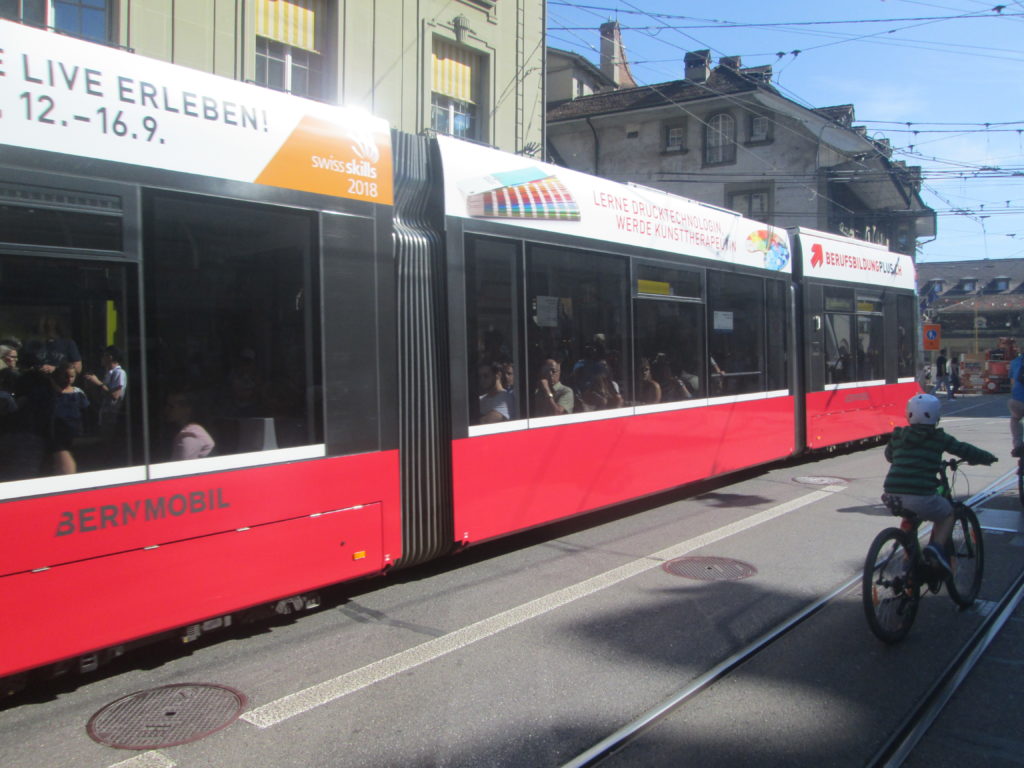
Trams in Bern
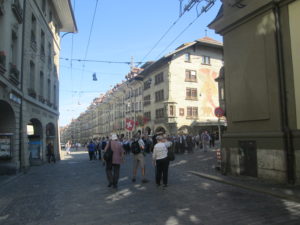
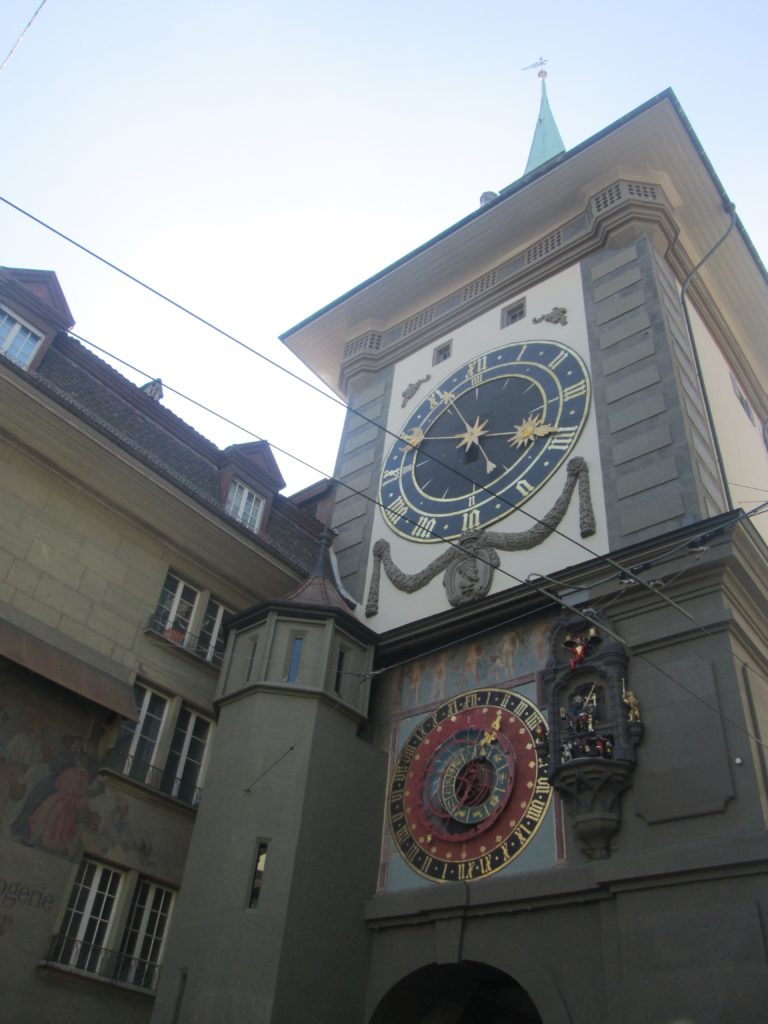
The medieval Clock Tower in Bern, Switzerland, seen from the Kramgasse. In the foreground is the Zähringen Fountain, surmounted by a bear in armour, the city’s heraldic device.
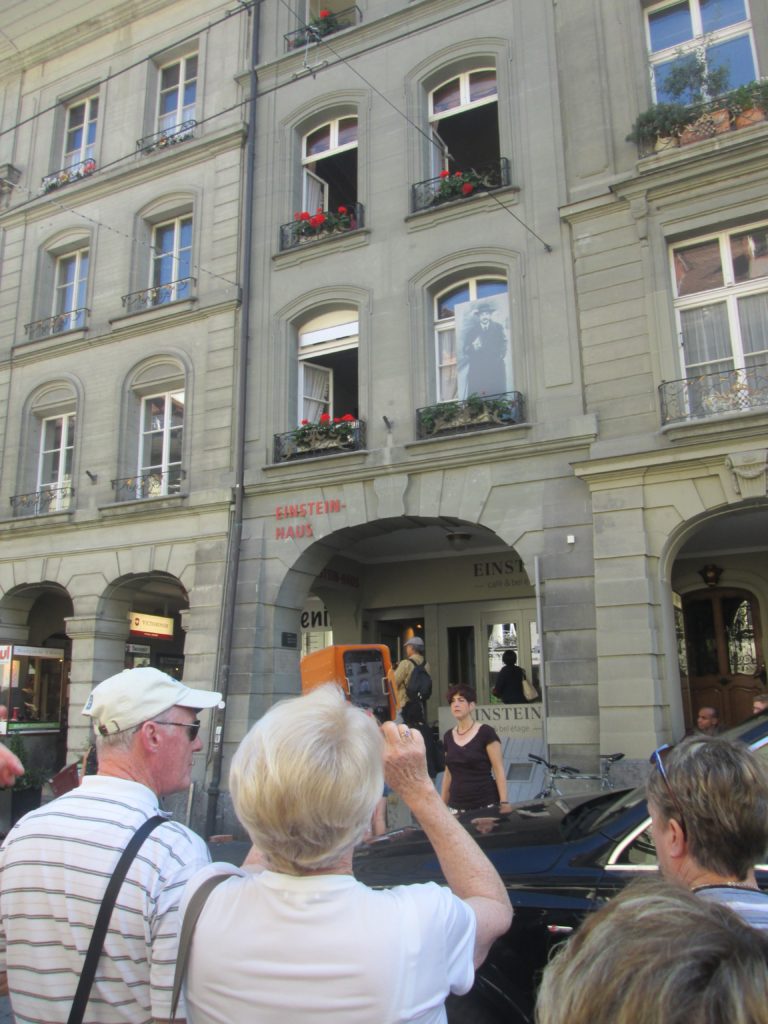
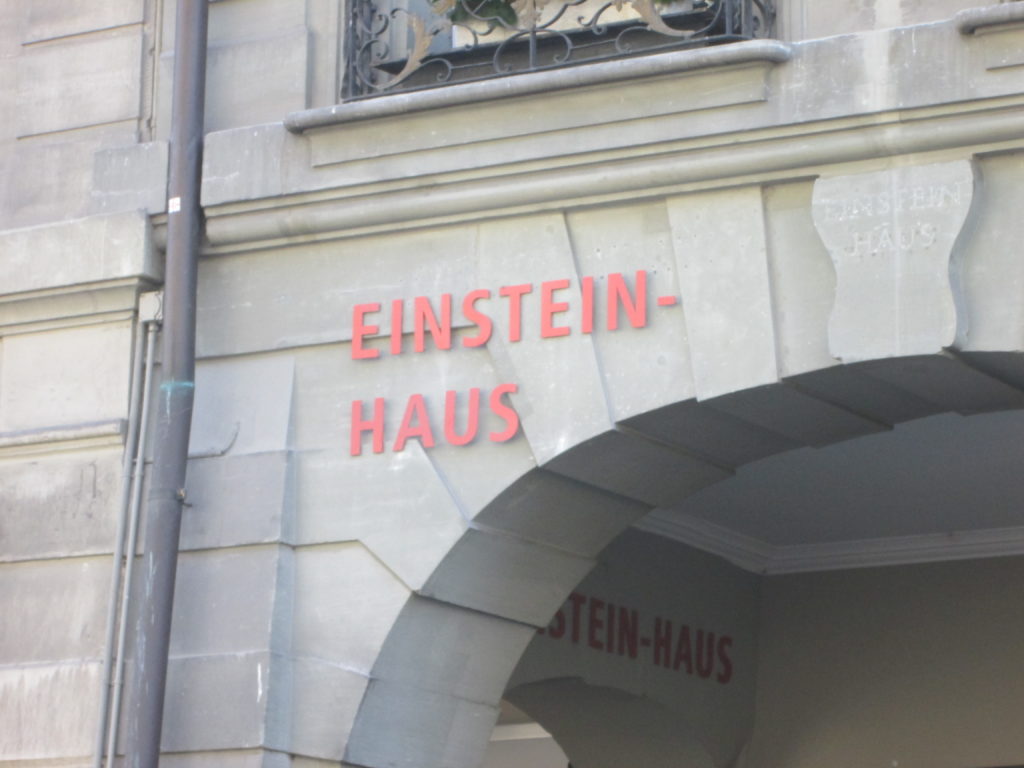
This was the house where Albert Einstein lived long ago. I am always conscious of something he said as a profound statement:
In your life, it is where you are there for other people as Albert Einstein said long ago …. Not for what you can get from them but what you can impart into their lives for good in an inner sense. We are here for one another …… I have a component of life that you need and you have a component of life that I need.
See this website:
Albert Einstein
From Wikipedia
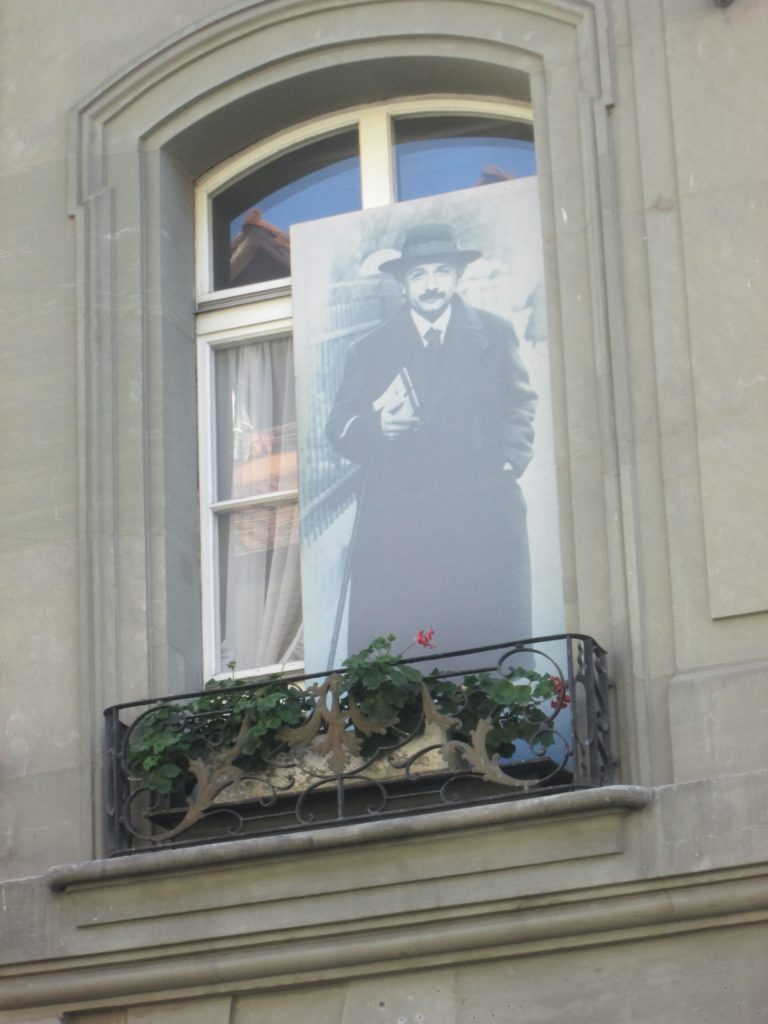
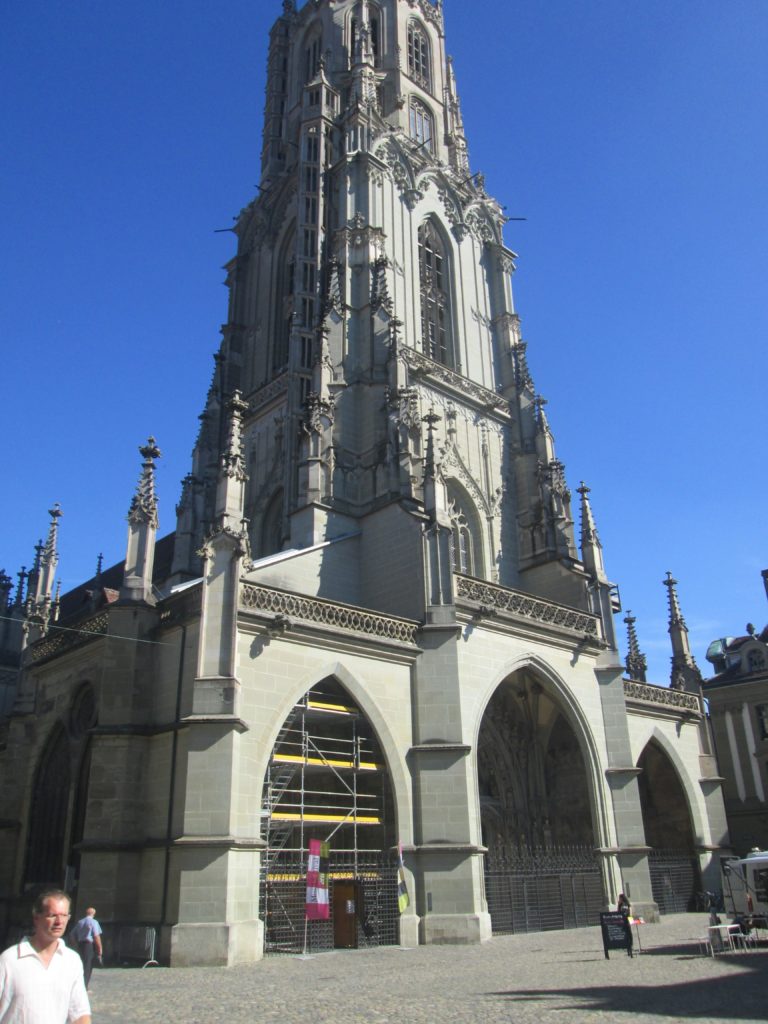
Bern Minster:
The first church on this site probably was a small chapel built during the founding of Bern (1191). The first church of Bern was a romanesque building which was probably built between 1155–1160, but is first mentioned in 1224. This church was outside the city walls, near what is now Kreuzgasse. The nave of the first church was about 16.5 m (54 ft) long by 6 m (20 ft) wide.[9]
In 1276, Bern broke away from the parish of Köniz to become an independent parish. For this new role, a larger church would have been necessary. It appears likely that construction on the second church began immediately. However, it isn’t mentioned until 1289 in writings of Bishop Benvenutus von Eugubio. This new church was a three nave building, with a length of 29.5 m (97 ft), a width of 24.5 m (80 ft) of which the middle nave was 11.1 m (36 ft) wide. The bell tower was located in the middle of the northern side nave, and filled part of the central nave.
The 1356 Basel earthquake caused extensive damage to the church walls, arches, and tower. Repairs proceeded slowly. The choir was rebuilt in 1359 and the roof was rebuilt in 1378–80. During the early stages of construction of the Minster, this church was still being used. The nave was finally demolished between 1449–51 and the tower remained until 1493.[9]
By the 15th Century, Bern had expanded and become a major city-state north of the Alps. To celebrate their growing power and wealth, plans were made to build a new and larger church. On 11 March 1421 construction began on the cathedral under the direction of the Strasbourg master builder Matthäus Ensinger [de], who had already built three other cathedrals. During construction, services were held in the old chapel while the new cathedral was built up around it.[10] During the 1440s the unvaulted choir was used for services after a simple roof was built and stained glass windows were installed. After the Old Zürich War 1440–1446 the nave of the old chapel was removed and work began on the nave and west end, under the chief masons Stefan Hurder and then Niklaus Birenvogt.
In 1483 Erhart Küng [de] (who carved the statues of the Last Judgement) became the master mason. Under his direction the nave walls were raised and the tower was built to the lower octagon. Construction on the lower rectangular tower began in 1481 or 1483 and continued until 1489. The upper rectangular section was built between 1489 and 1518. Following Küng’s death in 1506, Peter Pfister [de] lead the construction and finished the vaulting in the choir. The lower octagonal tower and roof were finished between 1518 and 1521.[9] In 1571 Daniel Heintz [de] was brought in as master mason to finish vaulting the nave and finish the work.[11] The central nave was finished by 1575 and at this point, construction stopped for almost three centuries. The organ was installed in three stages between 1727 and 1783.[9] The bell tower, with the largest bell in Switzerland, wasn’t completed until 1893.
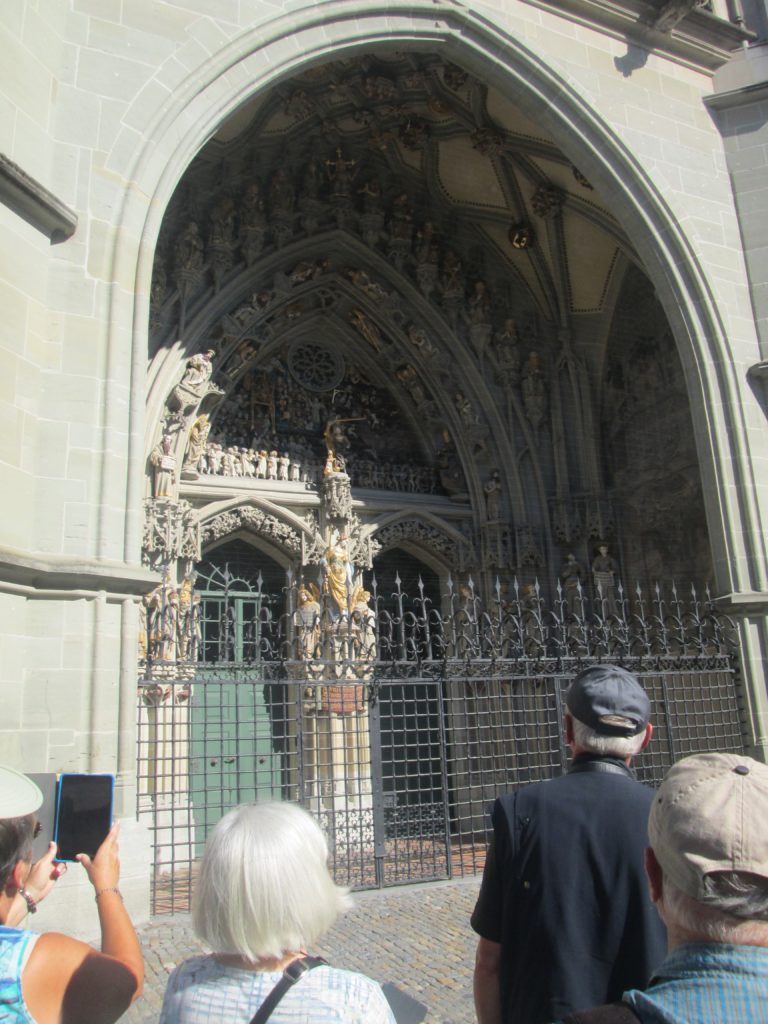
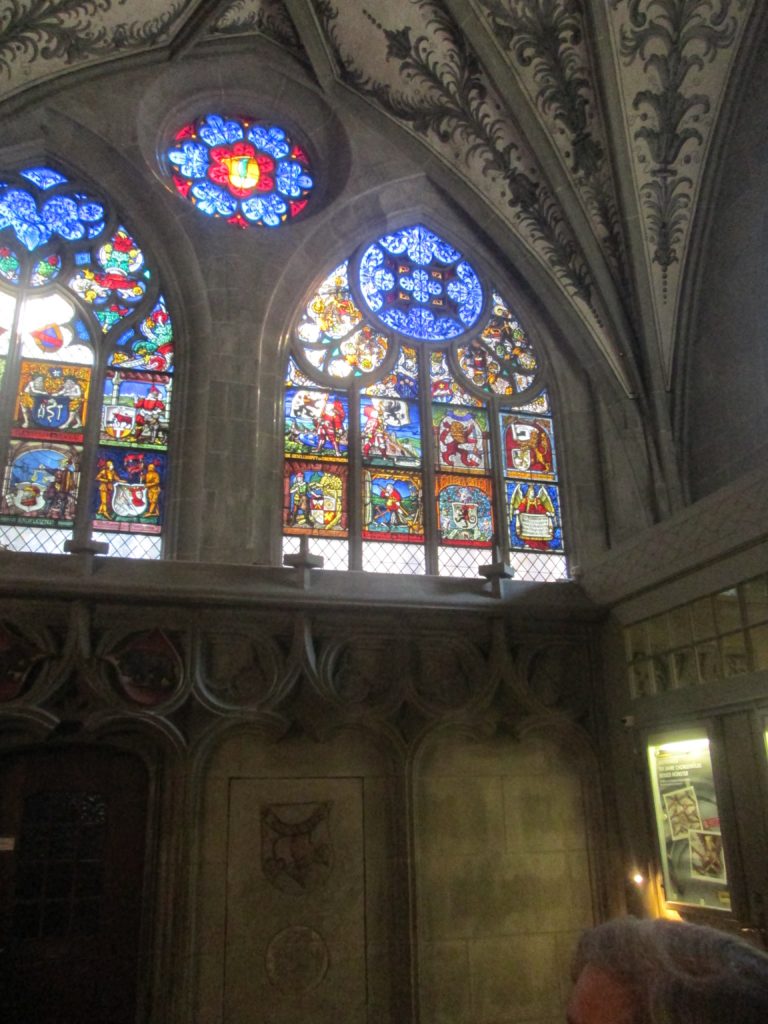

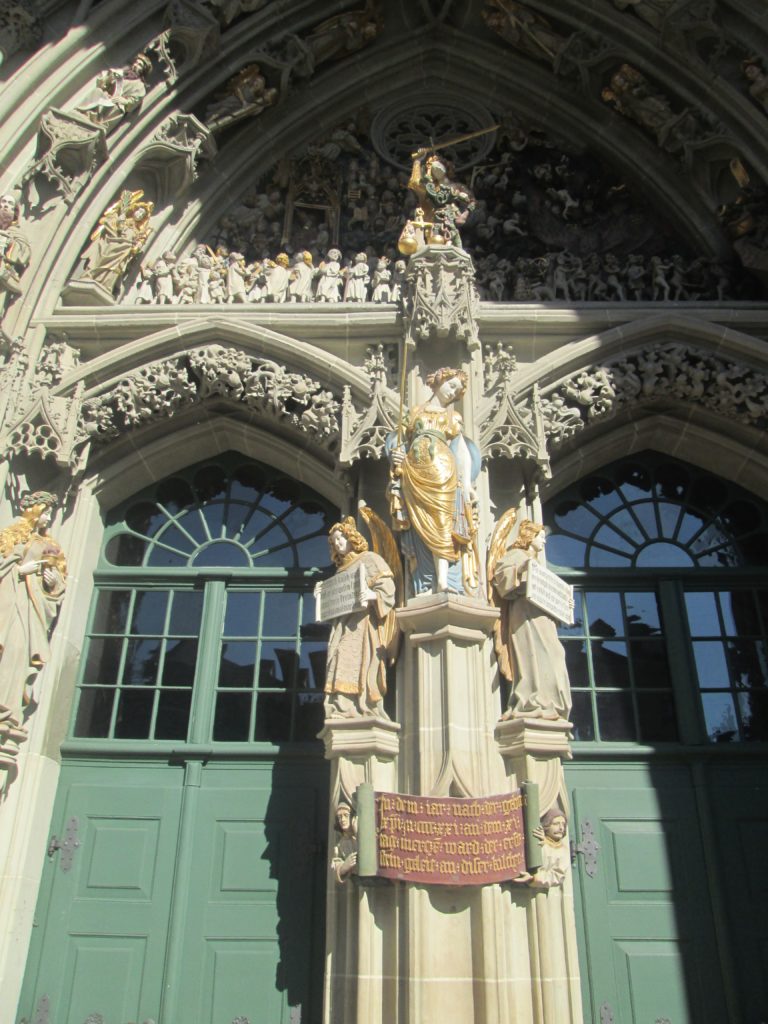
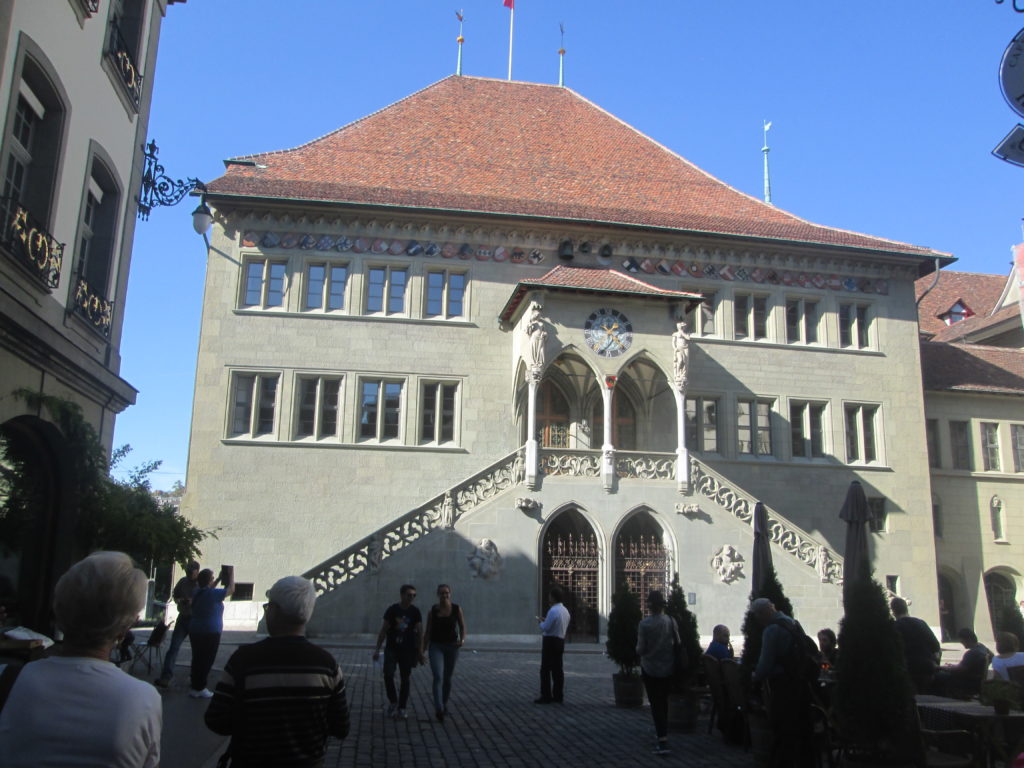
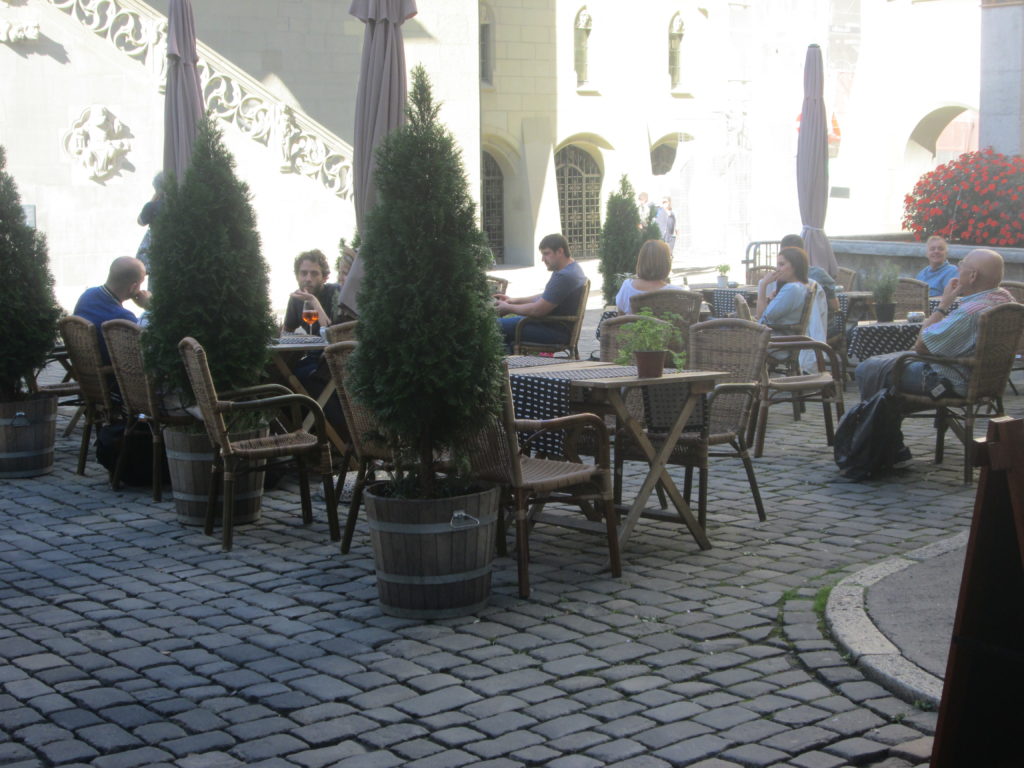
Cafe Area as a pavement cafe. You could sit at your table and eat or drink anything you ordered.
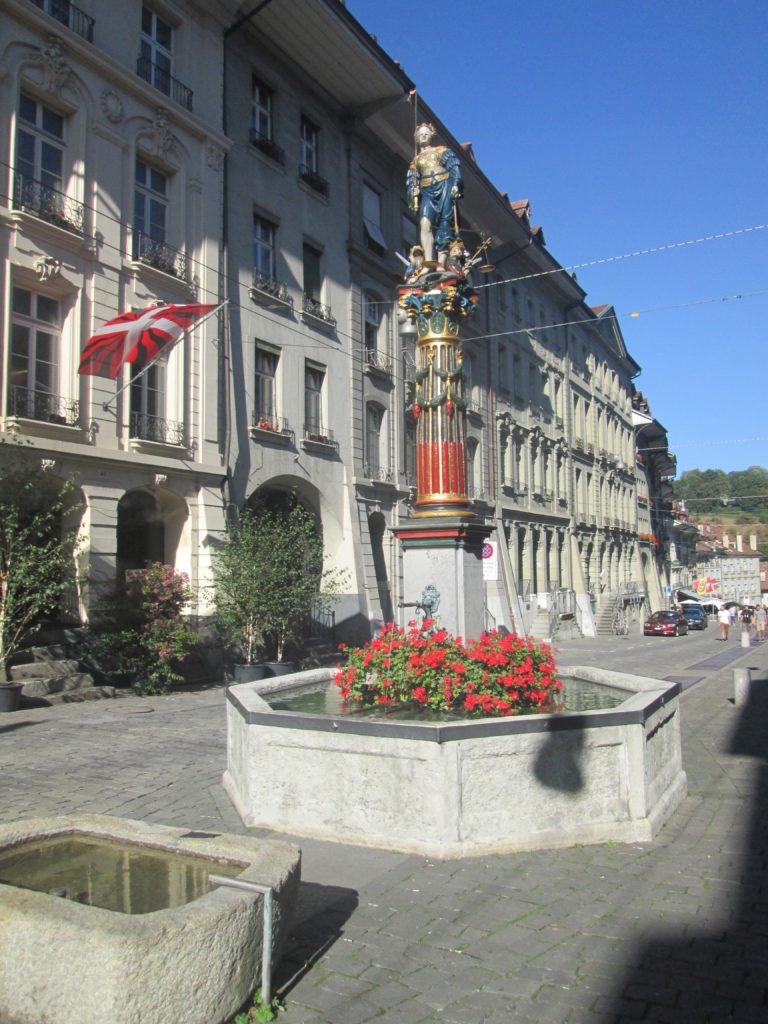
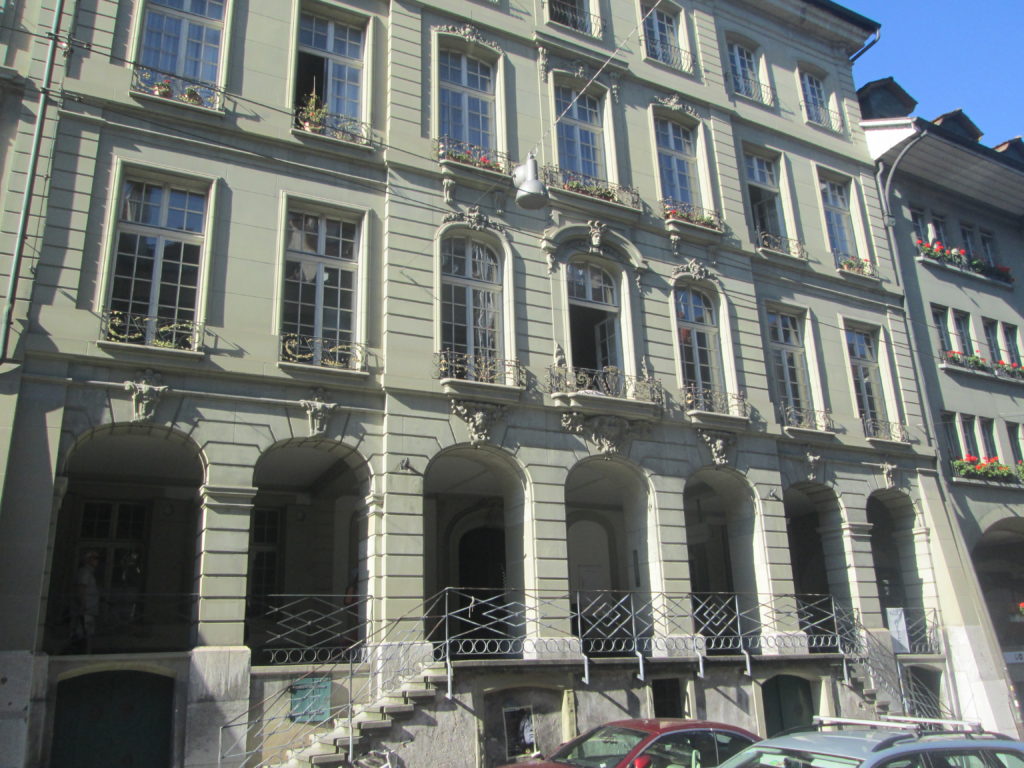
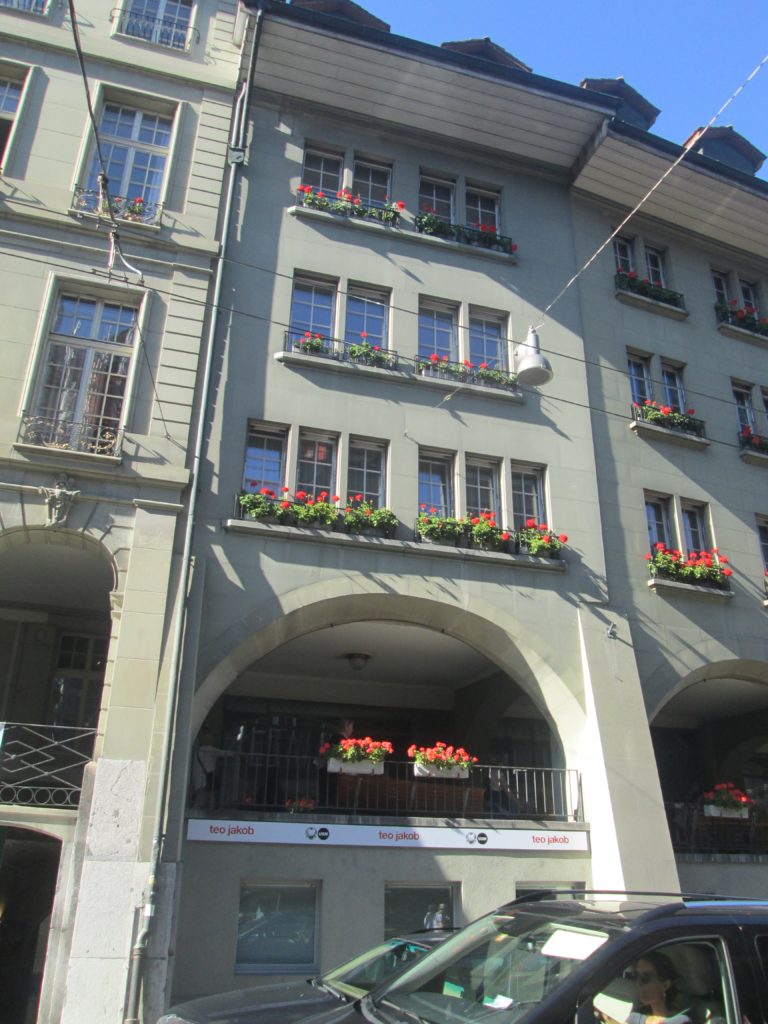
Harriet and I are gardeners on our five acre property at Chambers Flat (which is 35 kms. out from Brisbane, Australia). See our handmade house and ten garden rooms at my personal experiences website: http://www.kenaitken.net/1-the-house/ and garden.
We were really struck by the use of many suspended planter boxes planted with a geranium like plant which flowered with many red flowers. The frequent red flowers were very eye catching. They were repeated very frequently in walking down the street.
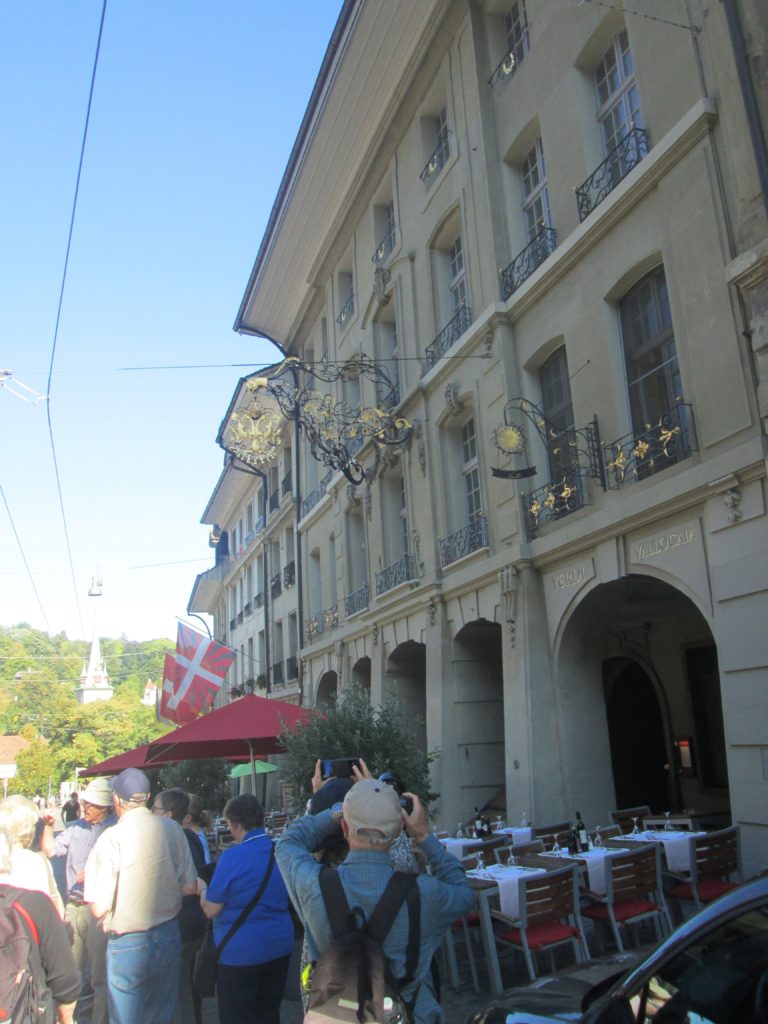
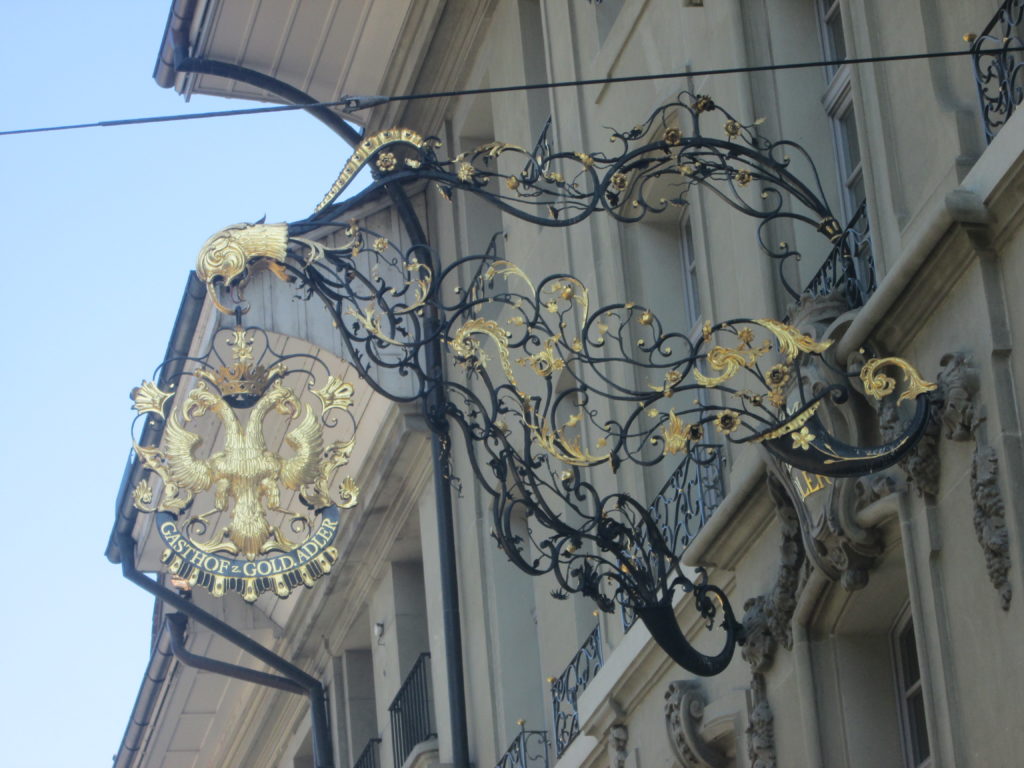
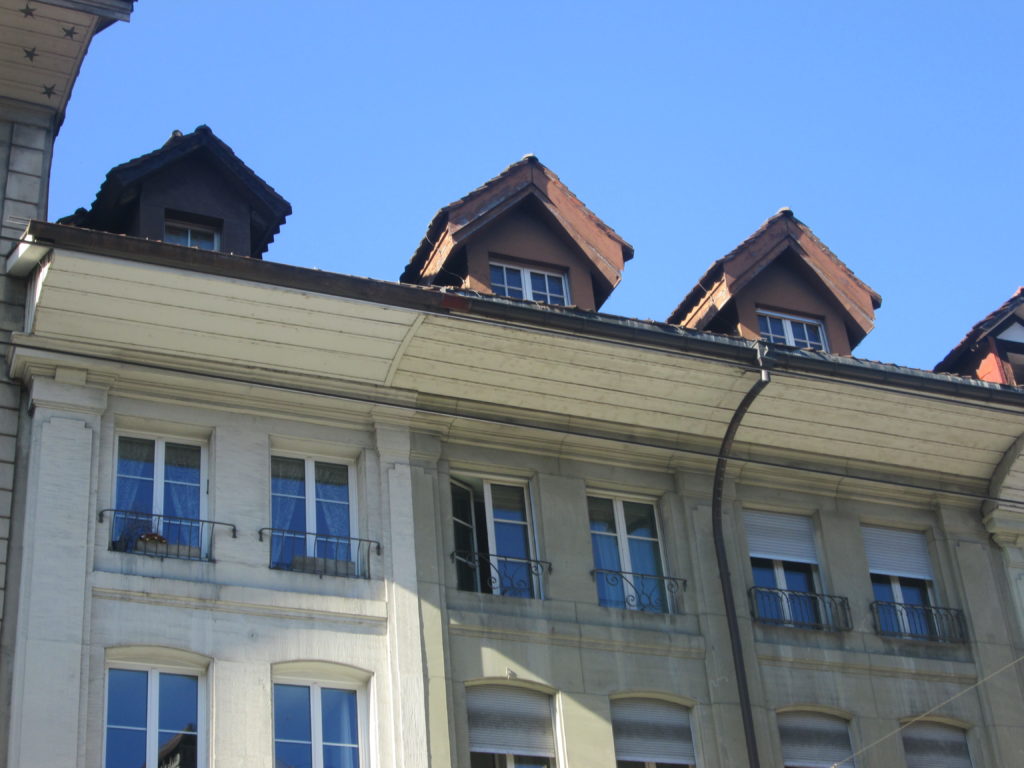

It was interesting in seeing these doors in the footpath. They were an old way of getting supplies into the house.
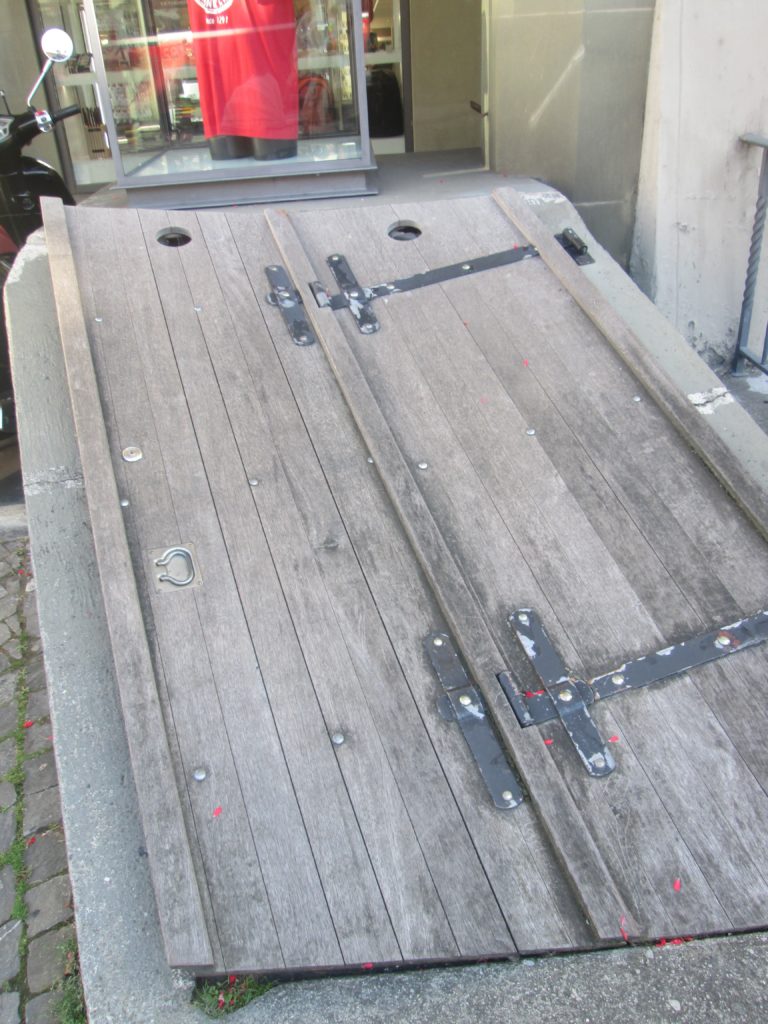

Looking down on the rooves of old houses from the bridge which crossed the Aare River. These houses lined the banks of the river.

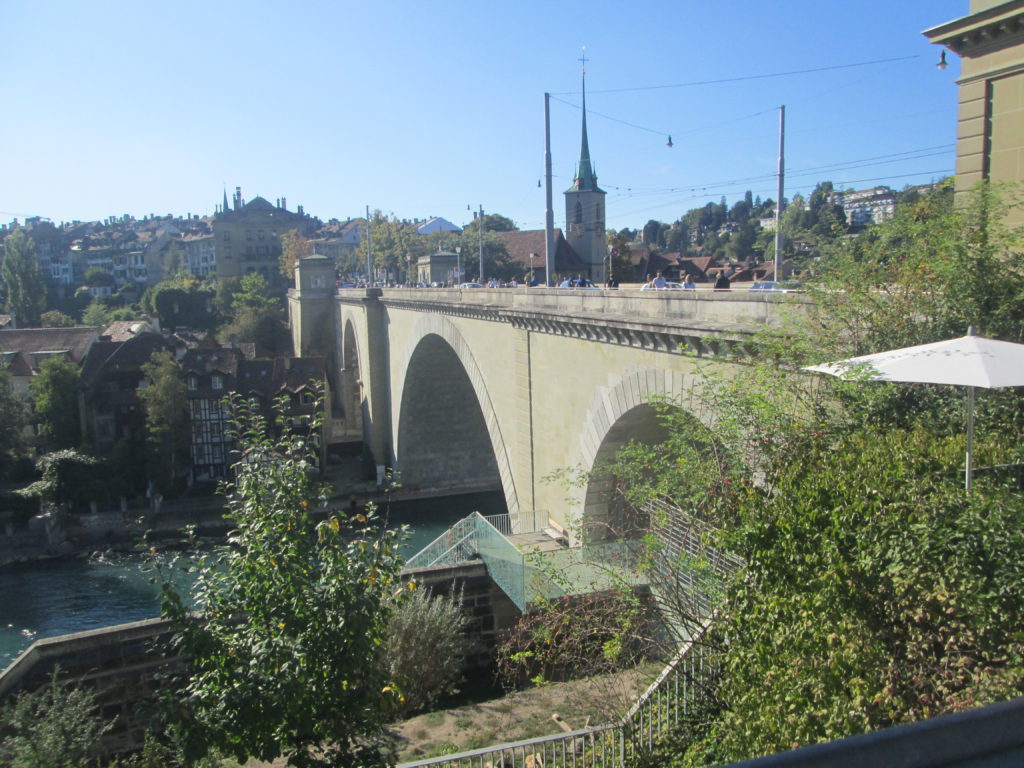
The bridge we just crossed over.
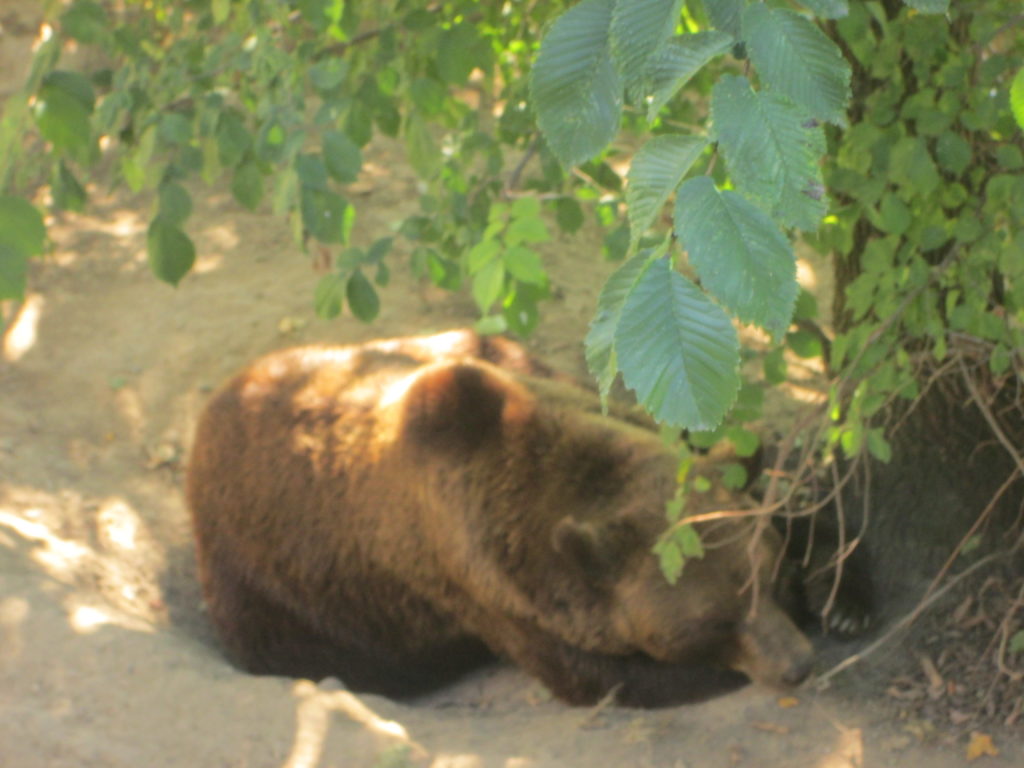
Bern Bear Park:
Since 1513 bears have been at home in Bern; until 1857 in the town itself, then in the bear pit, and since 2009 in the new and spacious bear park.
The site on the banks of the Aare stretches from the former bear pit opposite the Old Town to the river. Thanks to a lift, the entire facility is now wheelchair-friendly. The “Bear Pit”, which still exists and has been listed as a federal cultural asset of national significance, remains at the bears’ disposal.
Guests can go on a tour of the old bear pit as well as the new bear park. They get to see the new park with its green hilly terrain, which includes caves and the “Bear Bath” in the Aare River. Guided tours can also be booked during which you learn plenty of interesting things concerning the history of the bear park – a peek behind the scenes.
green hilly terrain, which includes caves and the “Bear Bath” in the Aare River. Guided tours can also be booked during which you learn plenty of interesting things concerning the history of the bear park – a peek behind the scenes.
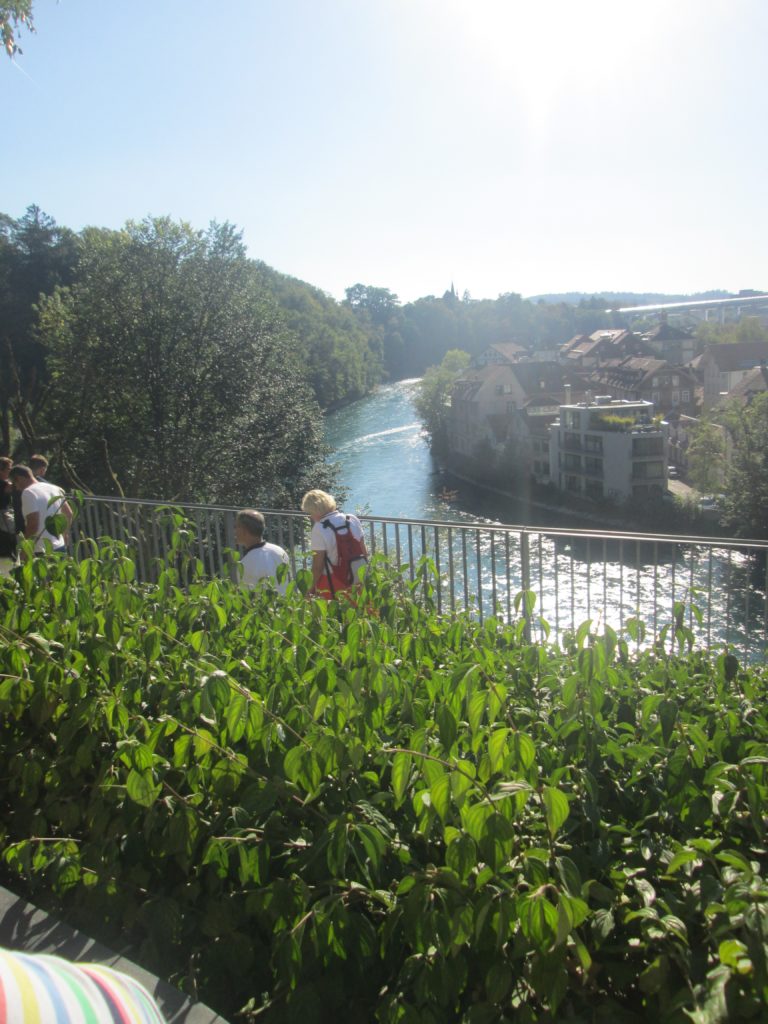
______________________________________________________________________________
